Are you ready for the easiest of easy stir fry dinners? This Salad Bar Vegetable Lo Mein is the perfect no-brainer dinner for when you can’t be bothered to even think about cooking, or for beginners who are still building their skills and confidence in the kitchen. Is this the most authentic, complex, and delicious lo mein recipe out there? Nope. This one is super scaled back and designed to be the best mix of easy, convenient, and satisfying. It has fresh crisp vegetables, comforting noodles, and an easy salty sauce that will remind you of your favorite take out.
Salad Bar Vegetable Lo Mein
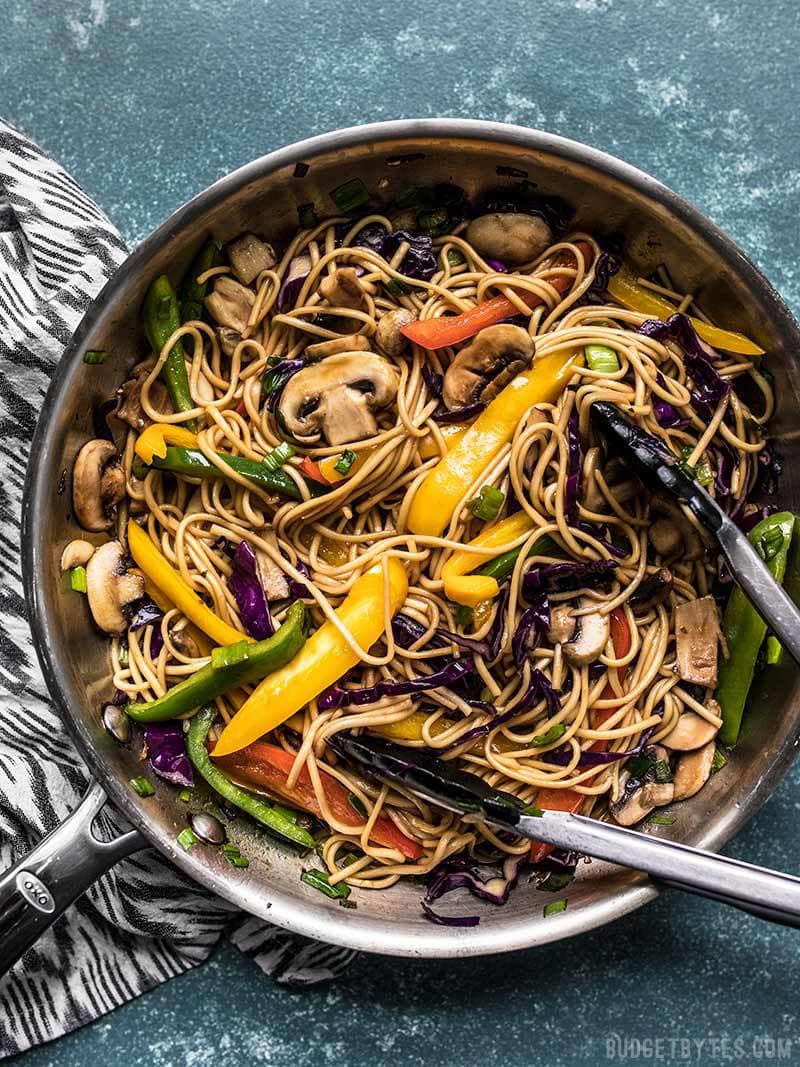
Why the Salad bar?
Salad bars aren’t just for making salads. They’re a great way to get a medley of vegetables when you only need a handful or two and buying one of each vegetable would just be waaaaay too much. Get a pinch of this, a pinch of that, and only what you need without having a refrigerator full of leftovers waiting to wilt. I’ve used this technique for pizza toppings for years, but it’s also a great option for quick stir fry dinners, like vegetable lo mein. Just be aware of the cost per pound and keep those portions in check to avoid going way over budget!
What else can I add to my Lo Mein?
I chose an easy mix of mushrooms, bell peppers, cabbage, and green onion for my vegetable lo mein, but there are so many other great things you can add! Here are a few ideas of things you can add from your fridge or the salad bar. And remember, the heavier the item, the more your salad bar cost will be, so stick to lighter ingredients.
Vegetables: spinach, snow peas, bean sprouts, shredded carrots, broccoli, cauliflower, or red onion.
Proteins: cubed tofu, chicken, shrimp, scrambled eggs. (Sauté these in the skillet until cooked through, before adding the vegetables.)
Make it Spicy: Add 1 Tbsp sriracha or chili garlic sauce to the stir fry sauce for a spicy kick
Toppings: chopped peanuts, sesame seeds, fresh green onion
*Note: I strongly suggest including either green onion or red onion in your vegetable mix, since I did not add any garlic to my stir fry sauce. Having an aromatic in the mix really helps round out the flavor of this stir fry.
What kind of noodles should I use?
The most budget-friendly option is to use just regular spaghetti noodles. There’s no shame in that game. I had a little more room in my budget this time around, so I went for some udon noodles that I found in the International aisle (see the package in the step by step photos). I like these noodles because they’re a bit softer than spaghetti and they tend to soak up that salty sauce a little better, but they did increase the total cost of this dish by a good 30%. Traditionally lo mein noodles are a wheat and egg pasta, so if you can find that or something close to it, that would be a win. If you can make it to an Asian market you can definitely get some awesome noodles for a very low price.
Salad Bar Vegetable Lo Mein

When you need dinner to be fast, easy, and satisfying, this Salad Bar Vegetable Lo Mein is your answer. It’s as simple and satisfying as it gets!
- 6 oz. noodles ($1.86)
- 3 Tbsp soy sauce ($0.18)
- 1 tsp toasted sesame oil ($0.11)
- 1 tsp sugar ($0.02)
- 1 tsp water ($0.00)
- 2 Tbsp high heat cooking oil* ($0.08)
- 3 cups mixed salad bar vegetables ($4.08)
-
Cook the noodles according to the package directions, then drain in colander. While the noodles are cooking, stir together the soy sauce, toasted sesame oil, sugar, and water.
-
Heat the cooking oil in a large skillet over medium high heat. Once the oil is very hot and shimmering (it should not be smoking), add the vegetables and stir fry for only about one minute, or just until the edges of the softer vegetables just begin to wilt.
-
Add the cooked and drained noodles and the prepared sauce. Continue to stir and cook until the pasta has absorbed most of the sauce and no more liquid pools on the bottom of the skillet (about 2 minutes). The vegetables will soften further during this time. Serve immediately.
*Use any high heat cooking oil or fat of your choice. Don’t skimp on the amount of oil used, as using a full 2 Tbsp helps coat the noodles and gives this a more realistic take-out flavor and mouthfeel.
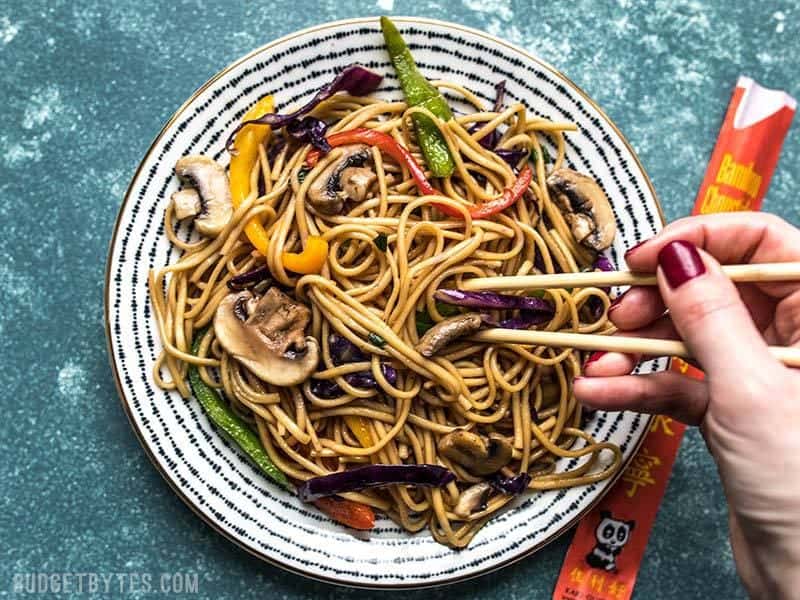
Step by Step Photos
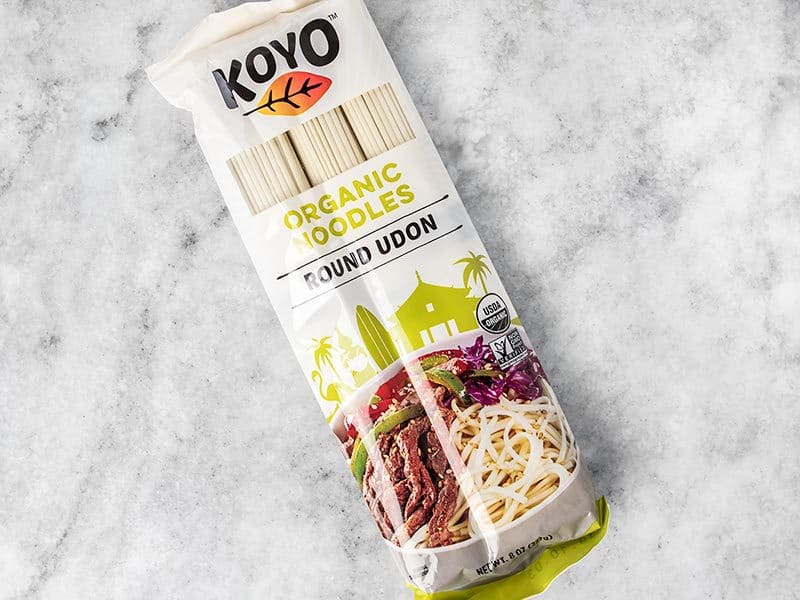
These are the noodles I used, which are an awesome texture and soak up the sauce nicely, but did make this dish quite a bit more expensive than it *needs* to be. Regular spaghetti noodles work just fine when you’re on a stricter budget. If you have an Asian market near by, you can most definitely get good noodles for a very low cost. Whichever noodles you choose, cook them according to the package directions and then drain them in a colander.
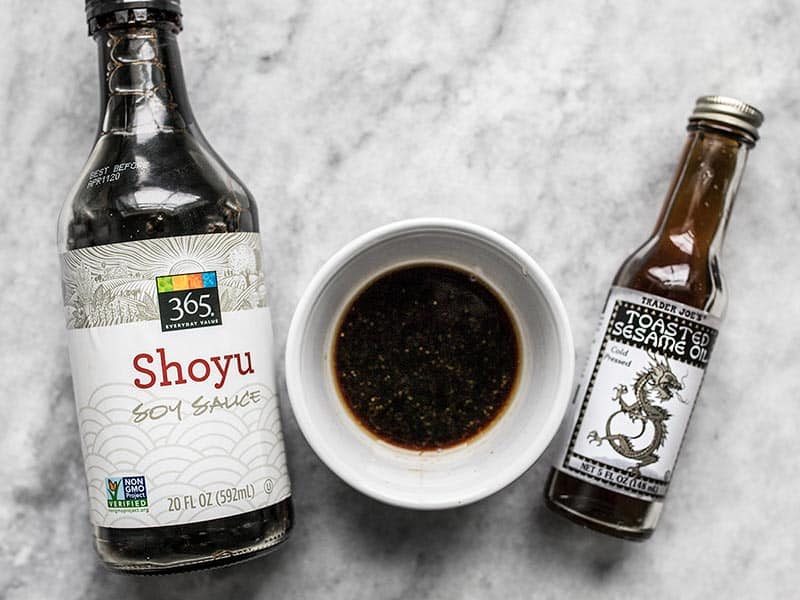
While the noodles are cooking, make the super simplified stir fry sauce. Stir together 3 Tbsp soy sauce, 1 tsp toasted sesame oil, 1 tsp sugar, and 1 tsp water. If you want to make it spicy, you can add 1 Tbsp sriracha or chili garlic sauce. NOTE: make sure to get *toasted* sesame oil, not regular sesame oil. The toasted variety has a much stronger, nuttier flavor. You can tell the difference by the color. Toasted sesame oil is a dark brown color, untoasted is a light straw color. Here is more information on the difference between the two.
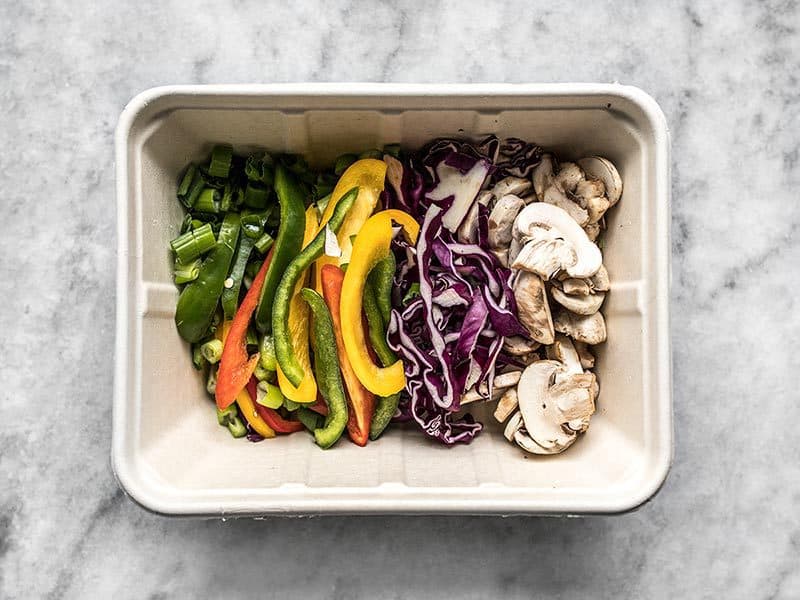
These are the vegetables I grabbed from the salad bar. You’ll need about 3 cups total. Stick to lighter vegetables (lower water content vegetables) like the mushrooms, cabbage, and green onion to keep costs low. Bell pepper are a bit heavier, but I kept those limited. Make sure to include some sort of onion to help round out the flavor in the stir fry.
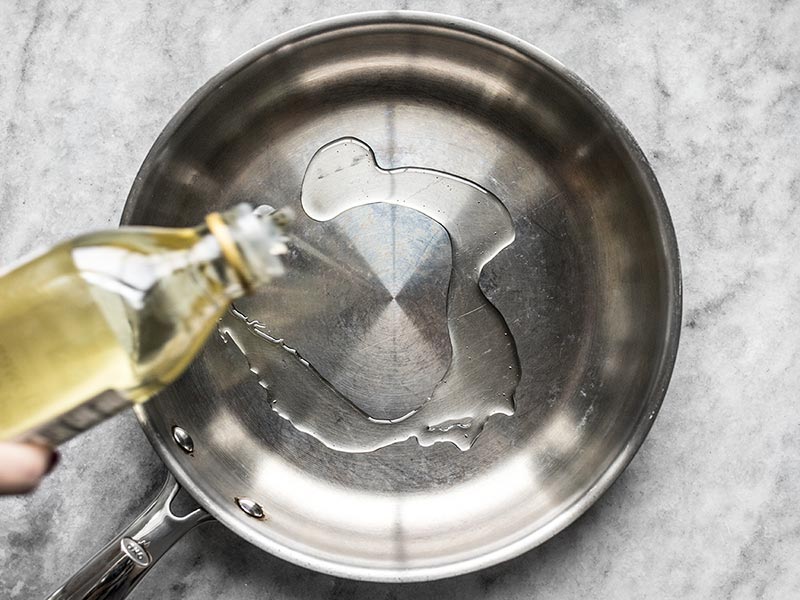
Heat 2 Tbsp high heat cooking oil (of your choice) in a large skillet over medium high heat. Don’t skimp on the oil here because this really helps give the flavor and mouthfeel that you get from take out.
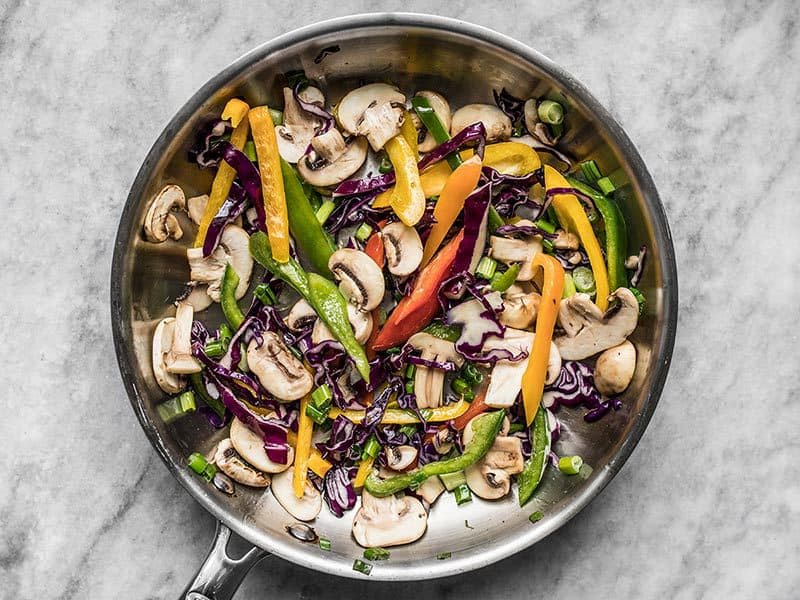
Once the oil is very hot and shimmering, add the vegetables and stir fry them very briefly, like only one minute. Just until the edges of the softer vegetables begin to wilt. The vegetables will cook more after you add the noodles.
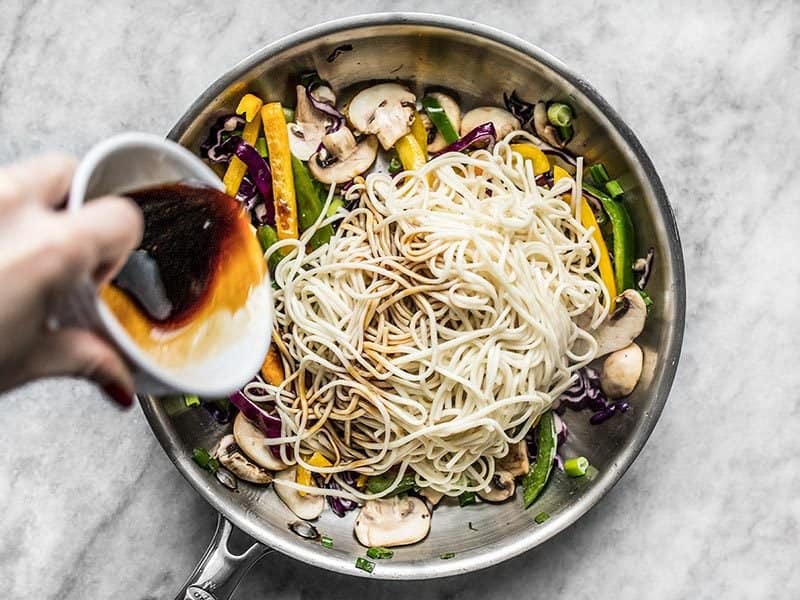
Add the cooked and drained noodles and the prepared stir fry sauce.
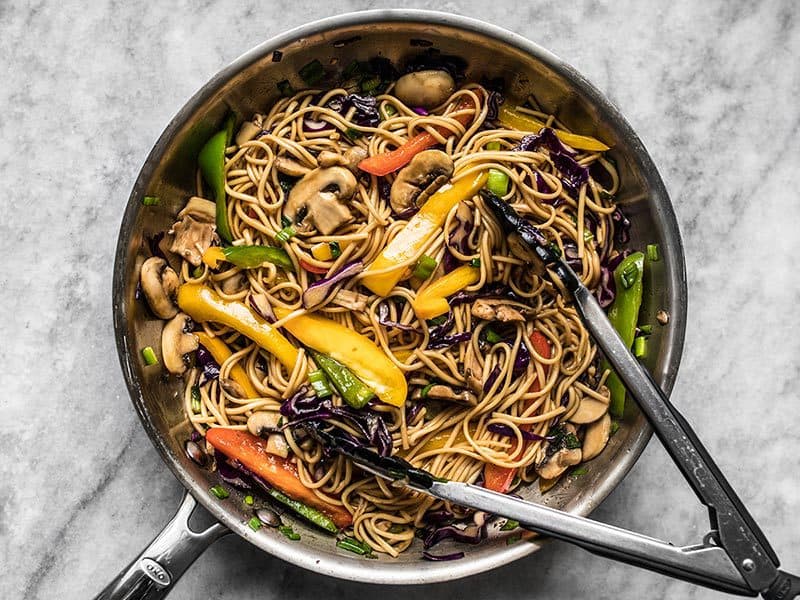
Continue to stir and cook until the noodles absorb the sauce and no more liquid pools on the bottom of the skillet (only about 2 minutes more). And that’s it! Your Salad Bar Vegetable Lo Mein is DONE. Dig in my friend.
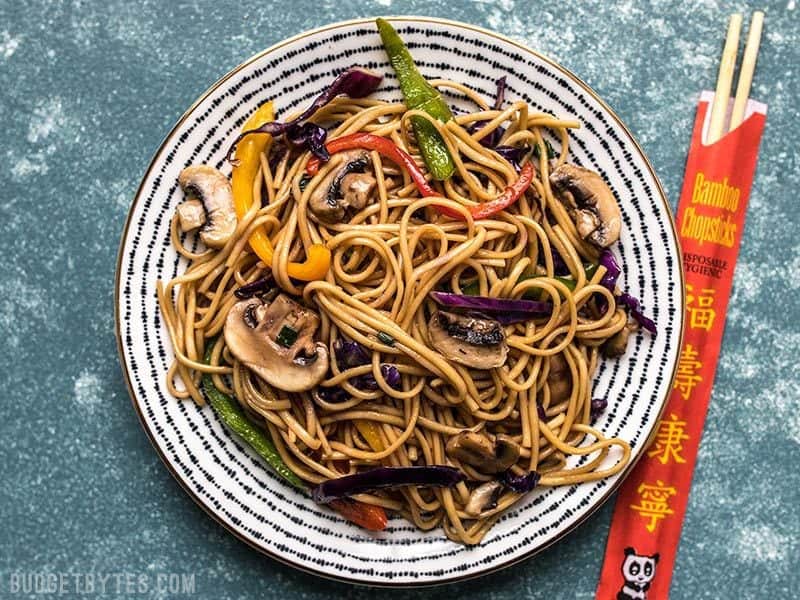
The post Salad Bar Vegetable Lo Mein appeared first on Budget Bytes.

0 comments